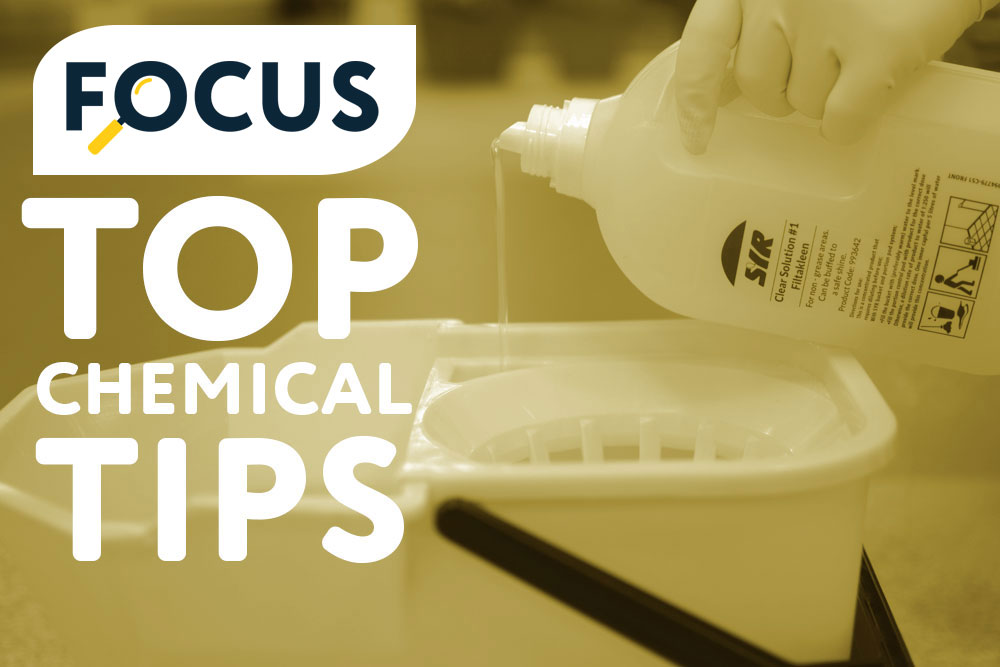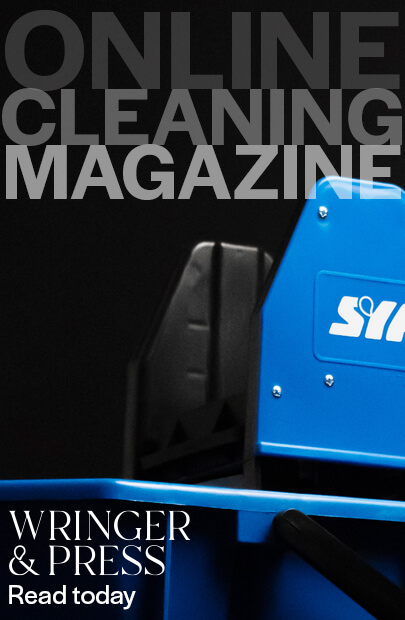
Chemicals remain an essential part of the cleaner’s cupboard. Although advances such as microfibre can reduce their use, we are a long way from completely chemical-free cleaning.
In March this year, 22 hospital cleaners in Torquay were awarded £70,000 in damages after falling ill because they were using a chemical incorrectly. So it is important, for ourselves and the planet, that we use chemicals safely. Training is crucial, but here are our key pointer chemical tips:
In March this year, 22 hospital cleaners in Torquay were awarded £70,000 in damages after falling ill because they were using a chemical incorrectly. So it is important, for ourselves and the planet, that we use chemicals safely. Training is crucial, but here are our key pointer chemical tips:
- Check out the COSHH and data sheets
COSHH is the law that requires employers to control substances hazardous to health. Chemical safety data sheets describe the hazards of the chemical and give information on handling, storage and emergency measures in case of accidents. Ensure you know what you are using and how to use it. - Wear appropriate PPE
Personal protective equipment can include protective gloves, clothing and footwear; eye protection and respirators. Users should be trained in why and how to use it. Remember that single use gloves are just that – throw them away after use. It is the employers’ responsibility to provide, replace and pay for PPE. Look after your skin – remove contamination properly, wash your hands, dry thoroughly and use skin creams regularly. Keep the workplace well ventilated. It is an employee’s responsibility to maintain PPE and report any damage. - Select the right chemical
Chemicals are designed for specific uses. Not all will deal with grease, while some should not be used in food areas. At SYR we offer a range of just eight chemicals to cover all situations. There are four in our Clear Solution range – for general cleaning, non-grease areas, kitchens and bathrooms. Others are for use with specific SYR equipment, such as MST. By offering this consolidated range, we can reduce the use of chemicals in the environment, and minimise the risk of using the wrong product. - Check dosing for the size of bucket
Dosing is an exact science, not a ‘pour and hope’ guesstimate. Under-dosing means it won’t work effectively. Overdosing is harmful to health, the environment and your budget, and will leave a slippy film on surfaces – particularly dangerous on floors. According to Defra, overdosing by 20% adds 20% to all impacts in the product’s lifecycle, including manufacture and transport. It also wastes money. SYR’s unique Portion Control Pods on our buckets are a simple but effective way of dosage control. We have calculated the amount of our chemicals needed for our buckets. Fill the bucket to the line, pour the chemical into the portion control pod, and you know you have the correct dosage. - Get it the right way round!
Always add chemicals to water, not the other way round. This reduces bubbles and stops splashback which could be harmful to the eyes and skin. - Don’t mix chemicals
Products which are perfectly safe on their own can cause harmful fumes or other chemical reactions when mixed. Adding any other chemical to products containing bleach, for instance, will cause chlorine to be given off. - Never store in unidentified containers
You may think you know what is in the container – but others won’t. Where a chemical could cause a hazard, this information should be included on the label. Pictograms and wording are covered by law. The containers themselves should prevent the escape of the chemical, not be adversely affected by the contents, and be strong enough to withstand normal handling. Child-resistant closures are also required in some cases. All good reasons for keeping chemicals in their original, clearly marked, containers. - Store safely
After use, make sure the top is secured and wipe off any excess immediately. Do this before you begin cleaning. Chemicals should not be stored on a high shelf, to prevent them falling or dripping on you. The labels should face forwards. Ideally the cleaner’s cupboard should be kept locked, with access limited to trained workers. Keep a spill clean-up kit handy.

